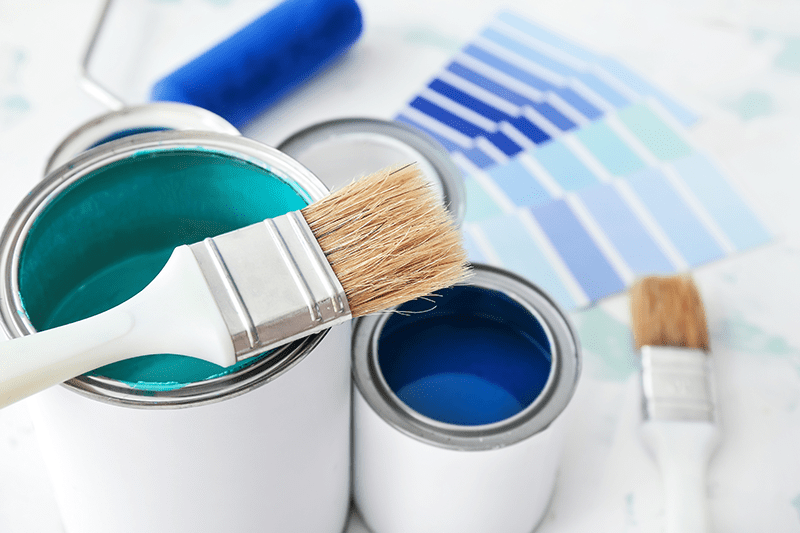
Selecting the right paint for your project can make a significant difference in the outcome of your painting endeavor. With numerous options available on the market, it’s essential to understand the factors that influence paint selection and how to make informed decisions based on your specific needs. In this article, we’ll discuss valuable tips for choosing the right paint for your requirements, covering everything from paint types and finishes to color selection and application techniques.
Understanding Different Paint Types
Before embarking on any painting project, it’s crucial to familiarize yourself with the various types of paint available. The three primary types of paint are latex (water-based), oil-based (alkyd), and specialty paints (such as enamel and epoxy). Latex paints are popular for their ease of use, quick drying time, and low odor, making them suitable for interior walls and ceilings. Oil-based paints offer superior durability and adhesion, making them ideal for high-traffic areas and exterior surfaces. Specialty paints are formulated for specific purposes, such as painting trim, cabinets, or metal surfaces. By understanding the characteristics of each type of paint, you can choose the one that best suits your project requirements.
Consider the Surface and Environment

When selecting paint for your project, consider the surface you’ll be painting and the environmental conditions it will be exposed to. Different surfaces, such as drywall, wood, metal, and concrete, may require specific types of paint and preparation techniques to ensure optimal adhesion and durability. Additionally, factors such as humidity, temperature, and exposure to sunlight can affect the performance and longevity of the paint. Choose paint products that are suitable for the intended surface and environment to achieve long-lasting results.
Evaluate Paint Finishes
Paint finishes, also known as sheens or gloss levels, determine the level of shine and durability of the paint once it’s dry. Common paint finishes include flat, eggshell, satin, semi-gloss, and high-gloss. Flat paints have a matte appearance and are ideal for concealing imperfections on walls and ceilings, but they offer minimal durability and are not easily washable. Eggshell and satin finishes have a subtle sheen and are suitable for most interior surfaces, providing a balance between aesthetics and durability. Semi-gloss and high-gloss finishes have a higher sheen and are commonly used on trim, doors, and other high-traffic areas that require frequent cleaning. Consider the function of the painted surface and the desired aesthetic when choosing the appropriate paint finish.
Test Paint Samples
Before committing to a large quantity of paint, it’s advisable to test paint samples in the actual space where they will be applied. Paint colors can appear differently under various lighting conditions and in different environments, so testing samples allows you to see how the color interacts with the surrounding elements. Paint small patches on the wall and observe them throughout the day to see how the color changes in different lighting conditions. Additionally, consider testing multiple colors to compare and contrast their appearance before making a final decision.
Consult Professional Advice
If you’re unsure about which paint products to choose or how to tackle a specific painting project, don’t hesitate to seek professional advice. Paint stores and home improvement centers often have knowledgeable staff who can provide guidance on paint selection, preparation, and application techniques. Additionally, consider consulting with professional painters or contractors who have experience with similar projects. They can offer valuable insights and recommendations based on their expertise, helping you achieve professional-quality results.

Invest in Quality Paint and Supplies
While it may be tempting to opt for budget-friendly paint products, investing in quality paint and painting supplies can pay off in the long run. High-quality paints offer better coverage, durability, and color retention, resulting in a more attractive and long-lasting finish. Additionally, using high-quality brushes, rollers, and other painting tools can make the application process smoother and more efficient, reducing the likelihood of brush marks and other imperfections. Remember that the cost of paint and supplies is a worthwhile investment in the overall quality and longevity of your painting project.
Choosing the right paint for your needs requires careful consideration of factors such as paint type, surface compatibility, finish, color, and quality. By understanding the characteristics of different paint products and evaluating your project requirements, you can make informed decisions that result in a successful and visually pleasing outcome. Whether you’re painting interior walls, exterior surfaces, or specialty areas, following these tips will help you select the perfect paint for your project and achieve professional-quality results. With the right paint and preparation, you can transform any space into a beautiful and inviting environment that reflects your style and personality.
